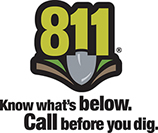Protect Wastewater Lines
Have You Assessed YOUR Sewer Lately?
Check out What is a Service Line?, What is a Cleanout?, How to Maintain YOUR Service Line, What is Inflow and Infiltration (I&)?, What Can You Do to Prevent & Reduce Inflow and Infiltration?, Why is Inflow & Infiltration (I&I) a BIG Problem?, Who is Responsible for I&I Problems?, What are Sanitary Sewer Overflows (SSOs)?, and Why do sewers overflow? Read full brochure.
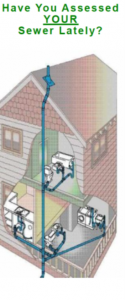
It’s a Toilet, Not a Trashcan!
Some Things Just Don’t Belong in the Toilet …
Toilets are only meant for one activity, and you know what we’re talking about! When the wrong thing is flushed, results can include costly backups on your own property or problems at your local wastewater treatment plant. That’s why it’s so important to treat toilets properly and flush only your personal contributions to the local wastewater treatment plant. Read full brochure.
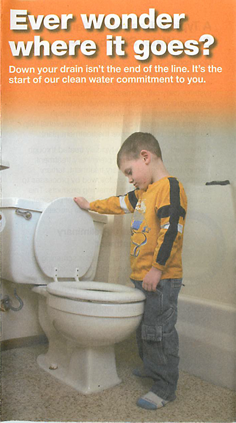
Ever Wonder Where It Goes?
A Typical Treatment Plant: Clean Water Step by Step
Most homes, businesses, and institutions are connected to a sewer system that carries their wastewater to a treatment plant. Sanitary sewer systems carry only domestic and industrial wastewater, while combined sewer systems also carry stormwater runoff. Wastewater in these systems flows mostly by gravity with occasional help from pumps, until it reaches the treatment plant. Read full brochure.
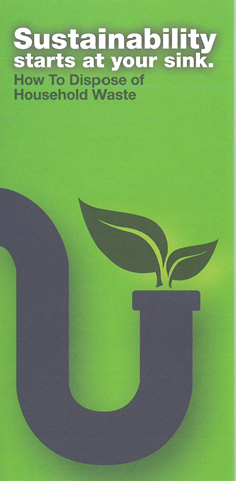
Sustainability Starts at your Sink
How to Dispose of Household Waste
Do Your Part for A Sustainable Planet!
Here’s How to Manage Household Waste
FIRST: REDUCE THE AMOUNT
You can reduce the amount of wastes from your home by simply reducing the amount you need. Here are some suggestions to help:
Before you buy a product, read the label and make sure that it will do what you want. Once you buy something, you are responsible for disposing of it properly.
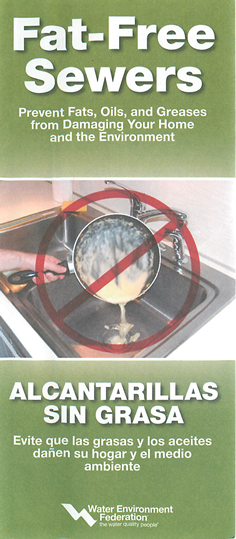
Fat-Free Sewers
Prevent Fats, Oils and Greases from Damaging Your Home and the Environment
Fats, oils, and grease aren’t just bad for arteries and waistlines; they’re bad for sewers, too.
Sewer overflows and backups can cause health hazards, damage home interiors, and threaten the environment. A common cause of overflows is sewer pipes blocked by grease. Grease gets into the sewer from household drains, as well as from poorly maintained grease traps in restaurants and other businesses.
Caution: Grease traps or interceptors at restaurants, large buildings, and other commercial establishments must be properly designed to handle the amount of grease that is expected, be installed correctly, and be cleaned and serviced on a frequent basis. Read full brochure or read insert.
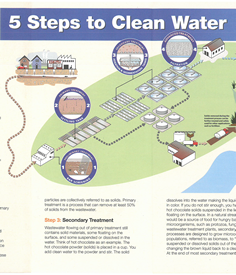
5 Steps to Clean Water?
A Typical Treatment Plant: Clean Water Step by Step
The modern sewer system is an engineering marvel. Most homes, businesses, and institutions throughout the modern world are connected to an infrastructure of below ground pipes that carry their wastewater to a treatment plant. Sanitary sewer systems carry only domestic and industrial wastewater while combined sewer systems also carry
stormwater runoff. Wastewater in these systems either flows by gravity or is pumped into the treatment plant, and in some cases a combination of both methods is used.

